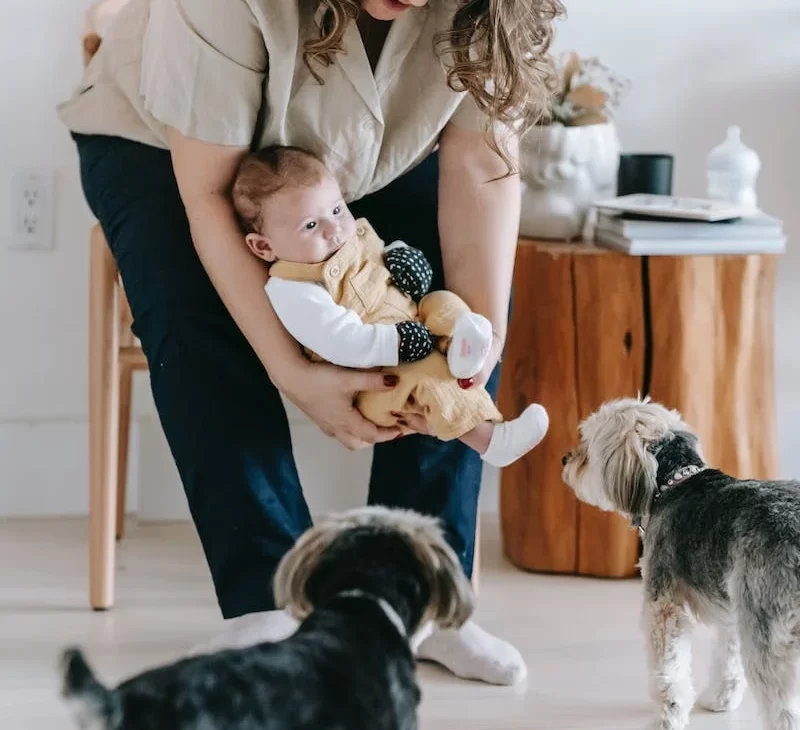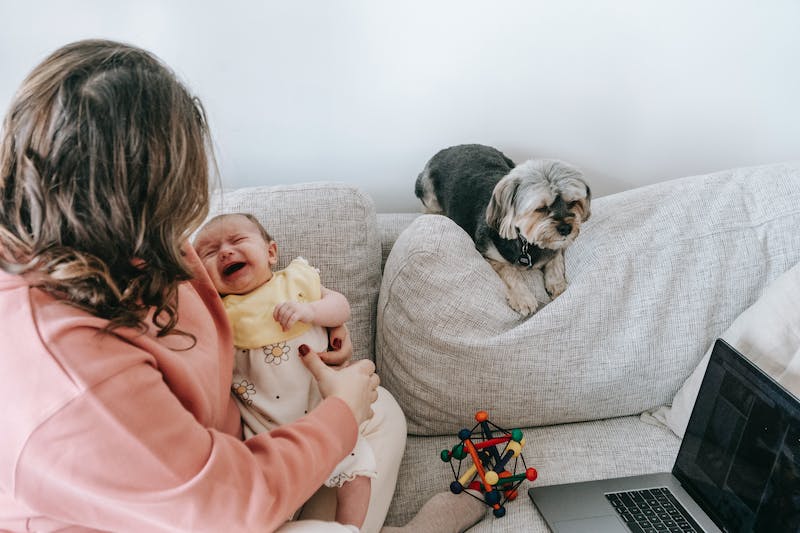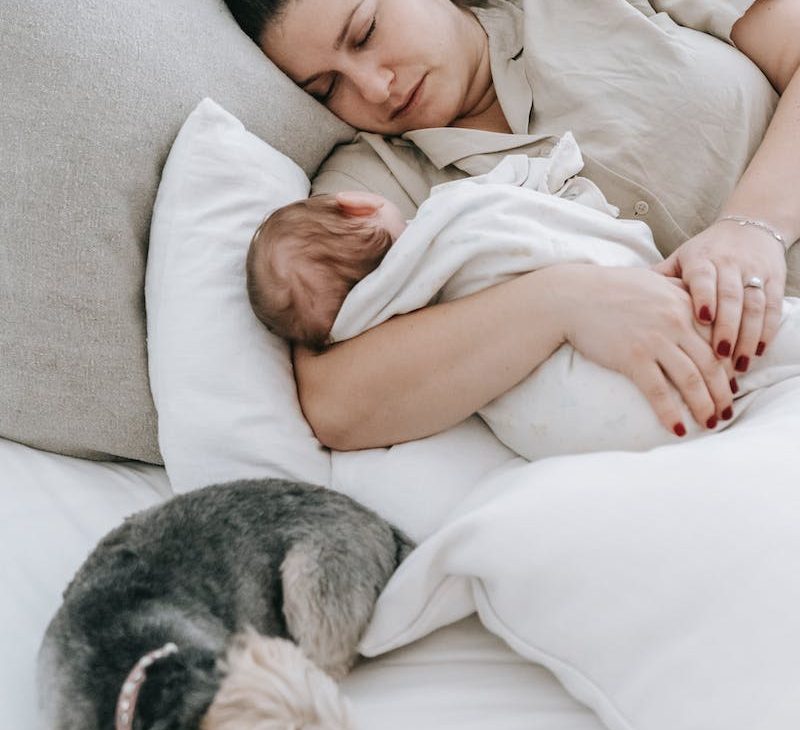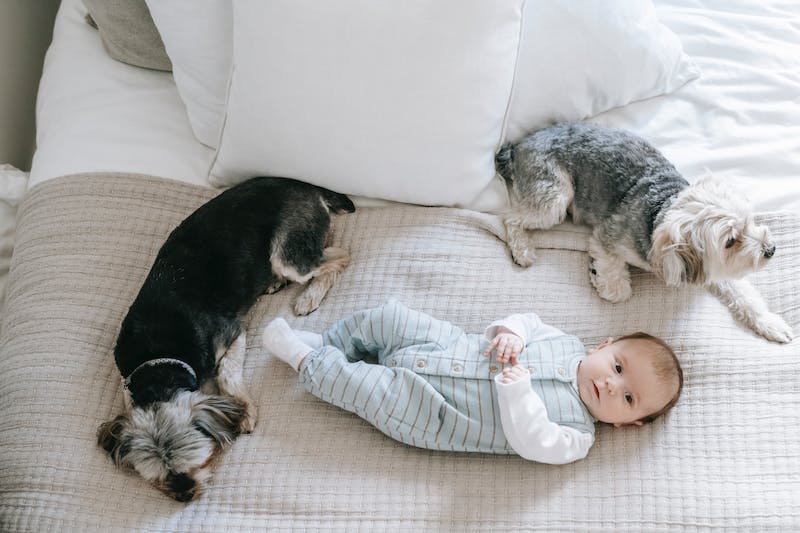Creative Ways to Prepare Your Dog for a New Baby
Creative Ways to Prepare Your Dog for a New Baby
Bringing a new baby home is a big change for everyone involved, but it can be especially overwhelming for your canine companion.
With so many new smells, sights, and sounds being introduced and lots of attention surrounding your newborn, it can be easy for your dog to feel anxious or uncertain. So, how do you prepare your canine companion for the arrival of your little one?
Carolyn Menteith, behaviourist at dog food subscription servicetails.com,explains how you can make the transition as smooth as possible for your dog, and ensure that your furry friend remains happy and accepting of the new changes ahead.
Creative Ways to Prepare Your Dog for a New Baby

- Get your dog used to a new routine before baby comes home
For a dog, the arrival of a new baby turns their life upside down. Their routine changes totally, their beloved humans are less available to them, and their previously familiar home looks different, sounds different and smells different. This can be difficult for a dog to deal with – as for them, the most important thing is that they feel safe – and unpredictable change is scary!
As much as you can, try to keep your dog’s routine the same but where that isn’t possible, introduce as many of these changes in a low-key way early and slowly long before the baby comes home. Think about what your ‘post-baby routine’ might look like (as much as you can) and if this is going to mean changing exercise times, feeding times, feeding locations, and social time with your dog, start this gradually as soon as possible.
This might also mean that you need to find someone who will help you with dog-related tasks like exercise or even occasional doggie day care. This is something to arrange and get your dog used to long before you need it.
- Early introductions
If you plan to have children, try and get a puppy from a breeder who rears their puppies in a family environment with resident or visiting children. If your dog has never been in contact with babies or children, it is important they get the chance to encounter some well-behaved, dog savvy children long before you bring your baby home.
These meetings should always be positive for your dog and the aim is that they learn to stay quiet and calm around small humans – not bounce on them and play with them!
Have your dog on a harness and lead, and reward them with tasty treats for quiet behaviour around the children. Start with the children being quiet and then you can build up to them playing and moving around.
Don’t let the children grab, hug or chase your dog – and make sure all treats and rewards come from you (not the children) as you don’t want your dog thinking that children are worth mugging because they sometimes come with treats!
By doing this early, you will get a good idea how your dog is likely to behave – and you can seek professional help from a canine behaviourist if you have any concerns long before your baby arrives.

- Introduce baby Items
With the arrival of a new baby comes the arrival of a whole host of new baby items – from cots, pushchairs and changing mats to bottles, toys and clothes. Too much change and novelty at once is difficult for any dog to cope with, and so It’s important you introduce these baby-related items into your home beforehand, letting your dog sniff and investigate them, see how they move, and become familiar with them long before your baby arrives.
This will help get your dog used to the new things in their life – including large moving objects like the pushchair or carrycot, and also allow them to become familiar with the new sights, sounds and smells.
- Play baby sounds
Babies are strange things to dogs who haven’t been exposed to them in the past. While it’s easy to assume our dogs will just ‘know’ that this is a small person, they look different from any other human they’ve met, smell different and of course, sound different. And they are not predictable either!
There is a whole range of unfamiliar sounds that come with a baby’s arrival – so it can be helpful to get them used to some of the different noises beforehand.
You can do this by playing recordings of different baby sounds, from crying to gurgling and cooing, for your canine companion to listen to. Do this at times when your dog is occupied with enjoyable things – like playtime or dinner – and start this at a low volume. If your dog doesn’t react to these noises, you can gradually increase the volume as your dog gets used to having these noises around them. Make sure you play it from all the rooms your baby is likely to be in.

Creative Ways to Prepare Your Dog for a New Baby
- Brush up on your training
If you’ve got an excitable pup that likes to jump up or dive straight into your lap on the sofa, then it’s a good idea to practise calm behaviours before your baby comes home.
Work on settle exercises and teach your dog that the best way to get your attention is with all four feet on the floor and not by jumping up. If you need help with this, talk to a reward-based trainer.
Once you have mastered these exercises, you can try doing them by carry around a doll in your arms, acting out scenarios that you might be in during the day, like sitting and feeding your baby – but be aware that real babies and dolls look, sound and smell different to a doll, so your dog won’t be fooled!
If you are struggling – or your dog is just too friendly and excitable, set up a dog pen in your main room so you can keep your dog with you and feeling part of the family but not able to jump on you and the baby.
- Think about sleeping arrangements
Many canine companions like to snuggle up on their human’s bed or sleep beside them, but if you plan on co-sleeping or having a bedside crib, you may need to move your dog elsewhere. This could mean moving them off your bed onto the floor or moving their bed to the other side of the room so your baby can be next to you. Using a puppy pen or crate can be helpful here.
This should be done in a transitional period prior to your newborn coming home so your dog is used to the change of sleeping venue.

Creative Ways to Prepare Your Dog for a New Baby
7. Get creative
Make use of baby gates in doorways, puppy pens and crates to create safe spaces where your dog can still feel involved with family life but without having direct access to the baby. This means that they won’t feel like they are being locked away from you but you can keep everyone safe.
8. Give individual attention
It’s important that your first baby, your fur baby, doesn’t feel neglected when you bring your newborn home. Whilst having a newborn can be time-consuming and demanding, you or your partner need to give your canine companion attention and affection.
They still need your love, your company and time – as you are their only family. They also need the same amount of exercise, play and enrichment as they always have. This can be hard when you have a newborn – and you might have to enlist family and friends (or professionals) to help – but this is important to make sure your dog stays healthy and happy, and doesn’t become frustrated, bored, or under-stimulated which can result in behaviour problems.
If you have any concerns at all about your dog’s behaviour around your baby or children, keep them away from children and consult an accredited behaviour professional immediately.
tails.com:https://tails.com/gb/range/treats-and-chews/



































































































































































































































































